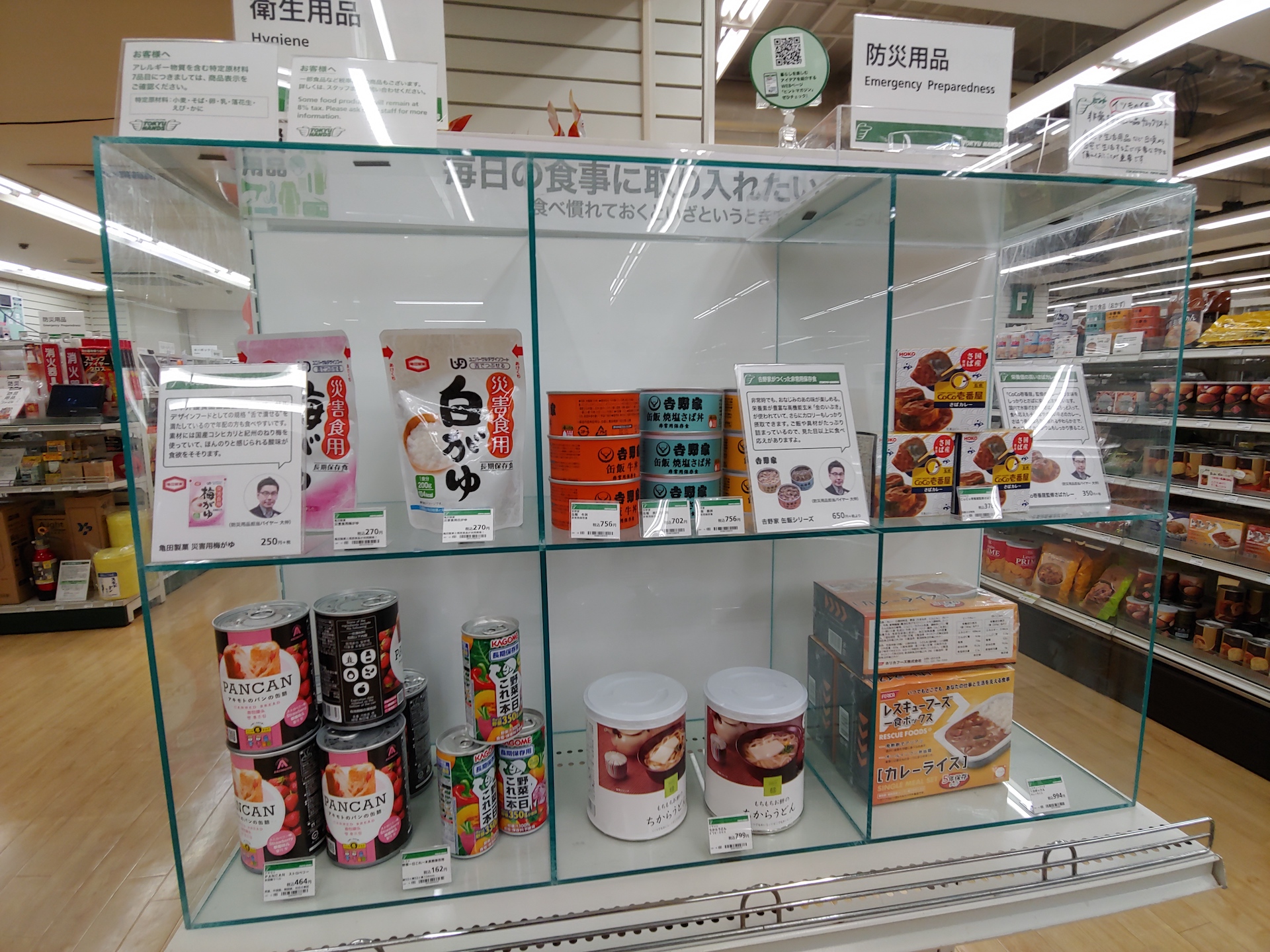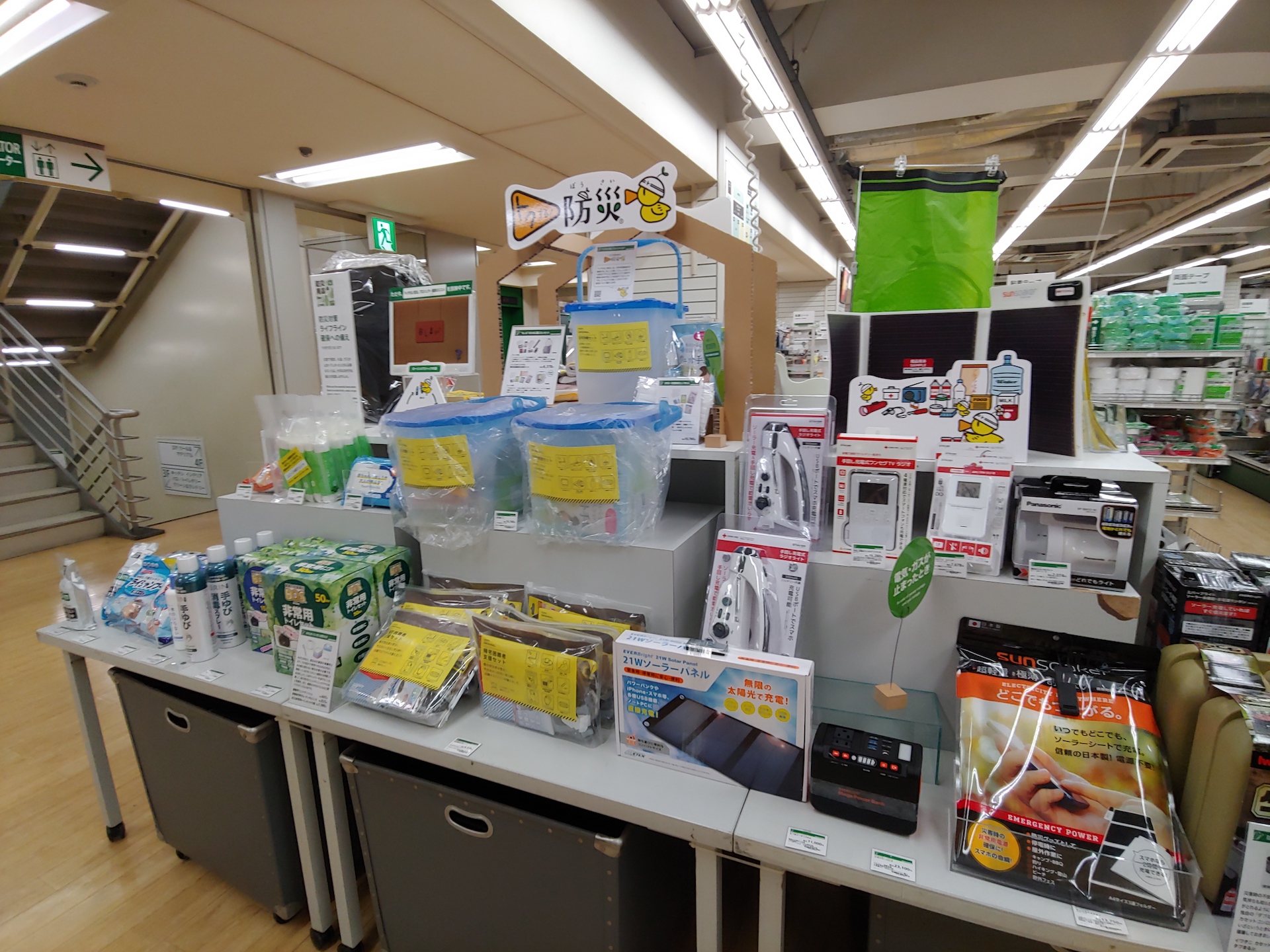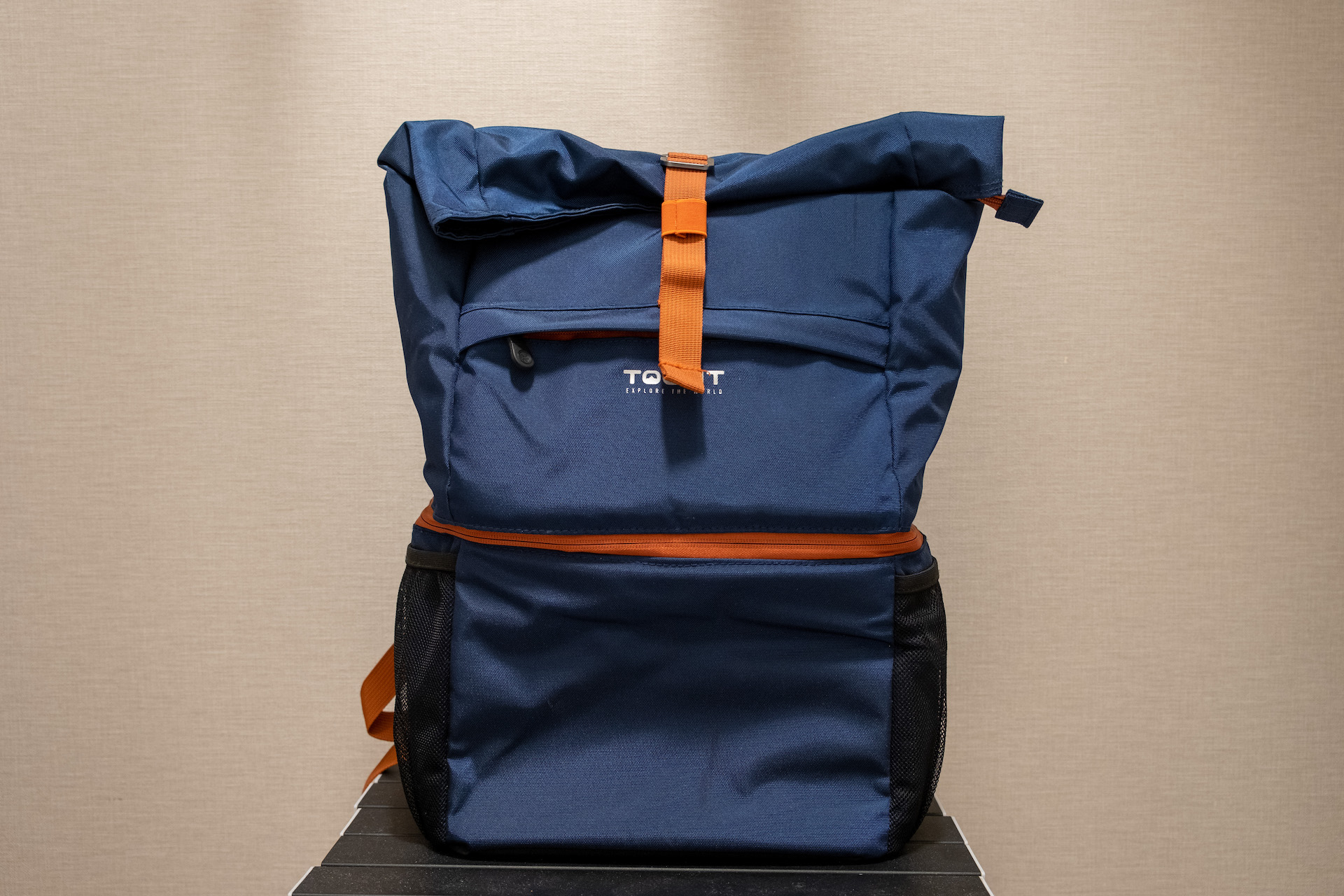Disaster preparation is an extremely important topic to cover when thinking about living in Japan. Earthquakes are a part of life here, and it’s a matter of when, not if, the next big one occurs.
Japanese (and those from areas around the world with regularly occurring natural disasters) tend to have disaster prep instilled from an early age. Although the ideas in this article might seem like pretty basic information to some, it might be brand new concepts to others.
I’ve been living in Japan for a few years, and luckily no major disaster has occurred in the Tokyo area so far. But, after watching the landslides from torrential typhoon rain in the Kyushu region earlier this year, it really made me wonder if I would be prepared for such an event. To which, the answer was no. I had become too used to the idea that around my home I can walk to 24 hr convenience stores to pick up anything I need, whenever. But in the event of a major disaster these services would not be available. So in order to be a little more proactive and feel like an actual adult, I have here some resources, tips, and my own attempt at putting together an emergency kit.
First, I actually visited the Ikebukuro Life Safety Learning Center. This probably isn’t a necessary step to learning about how to prepare for an emergency in Japan, but if you’re curious about more info and some hands-on activities it’s a good resource to check out!
Online Resources
For those located in Tokyo, the Tokyo Disaster Prevention Information page is the de facto source for information about anything disaster related. The primary language is Japanese (of course), but the site offers machine translation into a variety of languages.
There is also an online version of the Disaster Preparedness Tokyo handbook that you can find in English here.
For other areas, if you’re comfortable using Japanese you can type in the prefecture name and 防災 (ie. 長野県防災) as a starting point for information specific to your region.
What to prepare in the event of an emergency
According to the Tokyo Metropolitan Government guideline for “everyday provisions” a household of 4 (two adults, one child, and one elder) should have the following prepared.
Supplies for everyday use (to always be stocked):
- Items that survivors have found valuable
- Water (for drinking, cooking, and other use): 12 2-liter bottles
- Portable gas cooking stove: 1
- Gas canisters: 6
- Medicine, non-prescription drugs: 1 box each
- Food
- Pre-washed rice: 5kg
- Heat-and-eat rice: 6 packs
- Dried noodles: 1 pack
- Instant noodles: 3 packs
- Canned food (e.g.: canned fish, vegetables): 6 each
- Heat-and-eat food: 9 packs
- Canned fruit: 1 can
- Vegetable juice: 9 bottles
- Drinks (soft drinks, fruit juice, etc.): 6 bottles (500 ml)
- Cheese, kamaboko (steamed fish paste): 1 pack each
- Nutrition bars, etc.: 3 boxes
- Powdered health drink: 1 bag
- Seasoning: 1 set
- Daily items
- Tissue paper: 5 boxes
- Toilet paper: 12 rolls
- Disinfecting wet wipes: 1 box
- Disposable contact lenses: 1-month supply
- Disposable body warmer (disposable heat pack): 10
- Lighter: 1
- For women
- Sanitary napkin (menstrual pads): 60 pads
- For infants
- Powdered infant formula: 20 packets
- Baby food: at least a 1 week supply
- Baby wipes: 1 pack
- Diapers: 70 diapers
- For the elderly
- Rice gruel or other soft foods for the elderly: at least a 1 week supply
- Medicine (prescription drugs): 1 month supply
- Battery for hearing aid: 6 batteries
- Denture cleaner: 30 tablets
Supplies for a disaster:
- Items that survivors have found valuable
- Emergency toilet: 30 bags
- Flashlight: 2 flashlights
- Radio (hand-crank type): 1 radio
- Daily items
- Spare battery for mobile phones: 3 per phone
- Latex gloves: 1 box (about 100 gloves)
You’ll need to adjust the above quantities and supplies to fit your situation, but this is a good guideline to follow. Although, I’m not sure when the last time it was updated was, since most modern mobile phone do not have removable batteries! Perhaps a suggestion for a solar powered USB-charger would be a more practical option today.
Picking up supplies
Online retailers like Amazon and Rakuten will have ready-made emergency kits for sale. You can search these sites with keywords like “防災セット” (bousai setto, disaster preparation set) to quickly browse through your options. This is a very quick and easy way to have your disaster kit ready.
Another option is to find a retail store that has a 防災 section. Large retailers like Bic Camera and Tokyu Hands usually have a small corner of the stores dedicated to disaster preparation goods.




Putting it all together

I combined some of the items from the store I went to and some things I have at home to start my emergency kit. I think a solar power USB-charger is a good investment, and probably the next thing I’ll look into obtaining (also useful for camping).

It doesn’t take a long time to put together your own emergency kit, and it will definitely come in handy in any major natural disaster!
You might also be interested in…
Preparing for the Unthinkable: Emergency Preparedness in Japan for a Manmade Disaster
How to Find an Evacuation Shelter Near You and When to Evacuate: Emergency Preparedness in Tokyo
